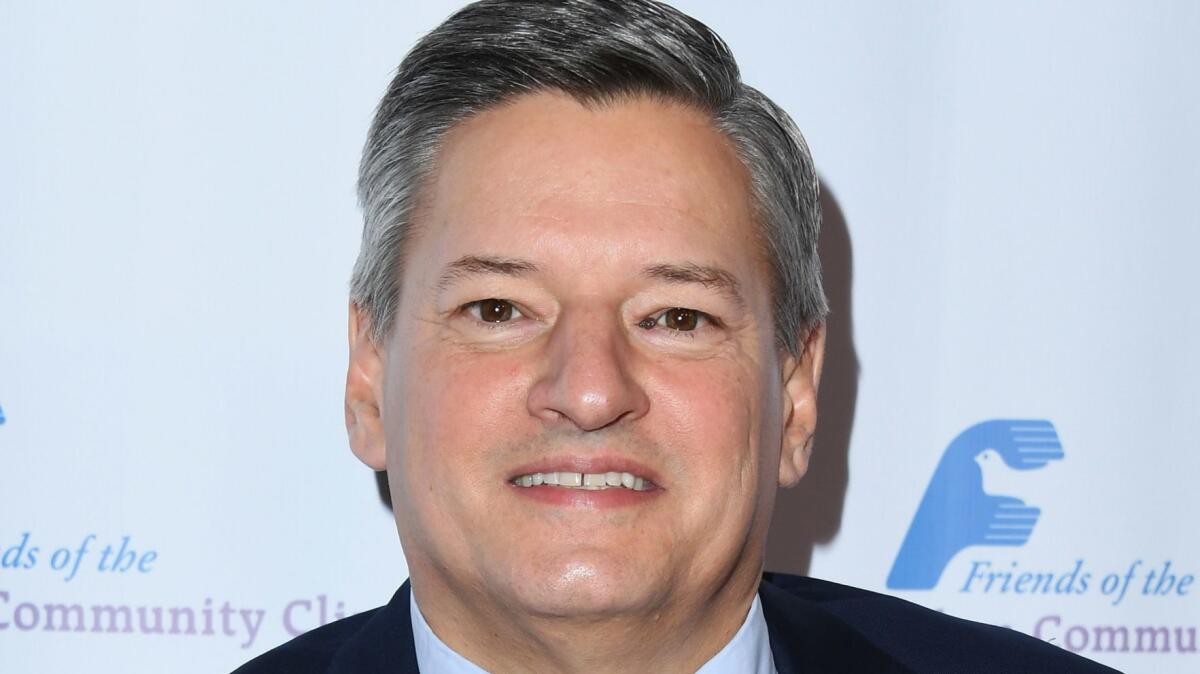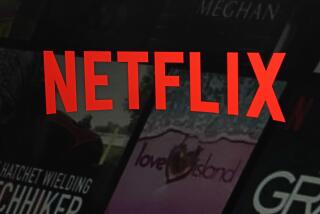Netflix’s Sarandos to new streaming competitors: Bring it on

Netflix Chief Content Officer Ted Sarandos knows that big players such as Walt Disney Co. and WarnerMedia are coming after his business — and he’s not worried about it.
The streaming behemoth saw it coming seven years ago when it began aggressively pursuing original programming of its own instead of depending solely on acquisitions from the TV and movie production studios.
“We needed to wean ourselves from dependence [on] program suppliers,” Sarandos said Monday at the UBS Global Media and Communications conference in New York.
Sarandos said Netfix fully anticipated competitors would enter the streaming arena and expects some of them to be successful. But he is comfortable with the company making major bets on its programs and films.
“We’re much better off deciding our own destiny and making our own choices with the consumer in mind than with a bunch of competitors,” he said.
The Los Gatos, Calif., company has heavily invested in original content to the degree that it was satirized on “Saturday Night Live” this past weekend. A commercial parody portrayed a Netflix executive throwing cash at a show creator just a few words into her pitch for a new show.
Sarandos chuckled when the sketch was mentioned.
As for Disney and WarnerMedia, he said content from the studios is not likely to disappear completely from Netflix once they get their own streaming services up and running (both Disney and WarnerMedia are set to launch their streaming entities in 2019). The deals Netflix makes for programs typically run for the life of the series, which can keep them on the service for years.
The Netflix original program pipeline is now robust enough that series are being canceled, although the process of how shows are axed remains a mystery to the public. Netflix does not publicly share audience data.
But Sarandos offered a few insights on how the value of programs is assessed, saying the quality of the audience can sometimes outweigh the quantity.
“There are some shows that people join Netflix to watch and they are so excited about it, it’s pretty much all they watch,” he said. “That show gets a thumb on the scale.”
Sarandos cited “Longmire,” a series picked up by Netflix after it was dropped by cable network A+E. The show’s older, rural-based audience is less appealing to advertisers, but that is not a factor for a commercial-free, subscription-based service.
“It wasn’t an enormous show for us, but new subscribers really loved that show and would attribute their whole value of their subscription for that show,” Sarandos said. “It brought a lot of brand love to Netflix.”
Awards can also make a difference in a show’s survival, he said.
Although large financial commitments and artistic freedom are major inducements for filmmakers to come to Netflix, Sarandos said there are still holdouts who prefer a traditional theatrical film release over streaming.
“There are some people who are great artists, they don’t care about money, they care about their artistic vision,” Sarandos said. “I couldn’t pay them enough to premiere the movie on Netflix if their desire is for that move to play on 3,000 screens for eight months prior to going to us and that’s why they went into it.”
Sarandos does not see any such barriers in the television industry, as streaming has offered creative flexibility as a major lure. But among filmmakers, “there is still an emotional connection to the theatrical experience,” Sarandos said.
Sarandos also suggested that exhibitors are depriving films of the buzz and cultural currency that Netflix can generate by insisting on exclusive windows for its originals, calling them “not very consumer friendly.”
“We’re trying to connect people with movies in a big, meaningful way,” Sarandos said. “We’re not trying to hurt theaters in any way.”
Twitter: @SteveBattaglio
More to Read
Inside the business of entertainment
The Wide Shot brings you news, analysis and insights on everything from streaming wars to production — and what it all means for the future.
You may occasionally receive promotional content from the Los Angeles Times.











